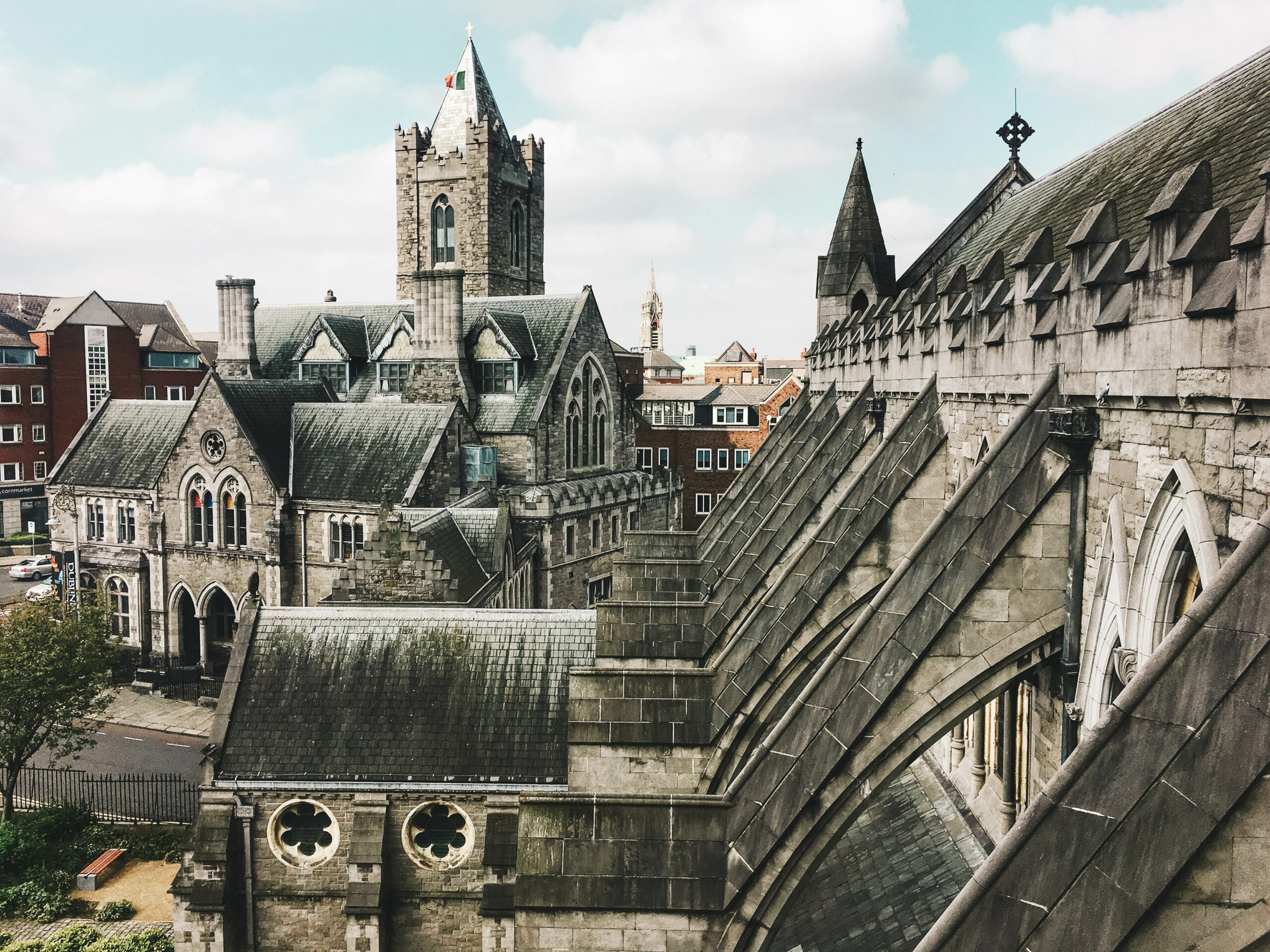“There are no strangers here; only friends you haven’t yet met.” Irish poet William Butler Yeats had it right about his hometown of Dublin. You’ll never feel alone because the Irish are born friendly and Dublin is the friendliest of all Irish cities.
Dublin is made for walking and is the perfect city break. Wander along cobblestone streets, through narrow lanes and across bridges to explore the compact capital that’s jam-packed with history and venues that celebrate Ireland’s traditional music, rock-and-roll stars, Nobel Prize–winning authors, theater and fine artists. Rain impedes only traffic, and the weather could improve drastically in an hour or two. Enjoy the warm welcome and our guide on what to see and do in Dublin.
Eat
Dublin offers a wealth of culinary delights from Ireland and farther afield. Near the Merrion Square area on Baggot Street Lower, Doheny & Nesbitt delivers what you’d expect from one of Dublin’s favorite public houses—fish and chips, bangers and mash, Guinness, huddled politicians and décor that hasn’t changed since the pub opened in 1867. Around the corner, Restaurant Patrick Guilbaud holds two Michelin stars and a prime spot in The Merrion Hotel, Dublin’s exclusive gem. The elegant eatery fashions French haute cuisine such as blue lobster ravioli with coconut scented lobster cream.
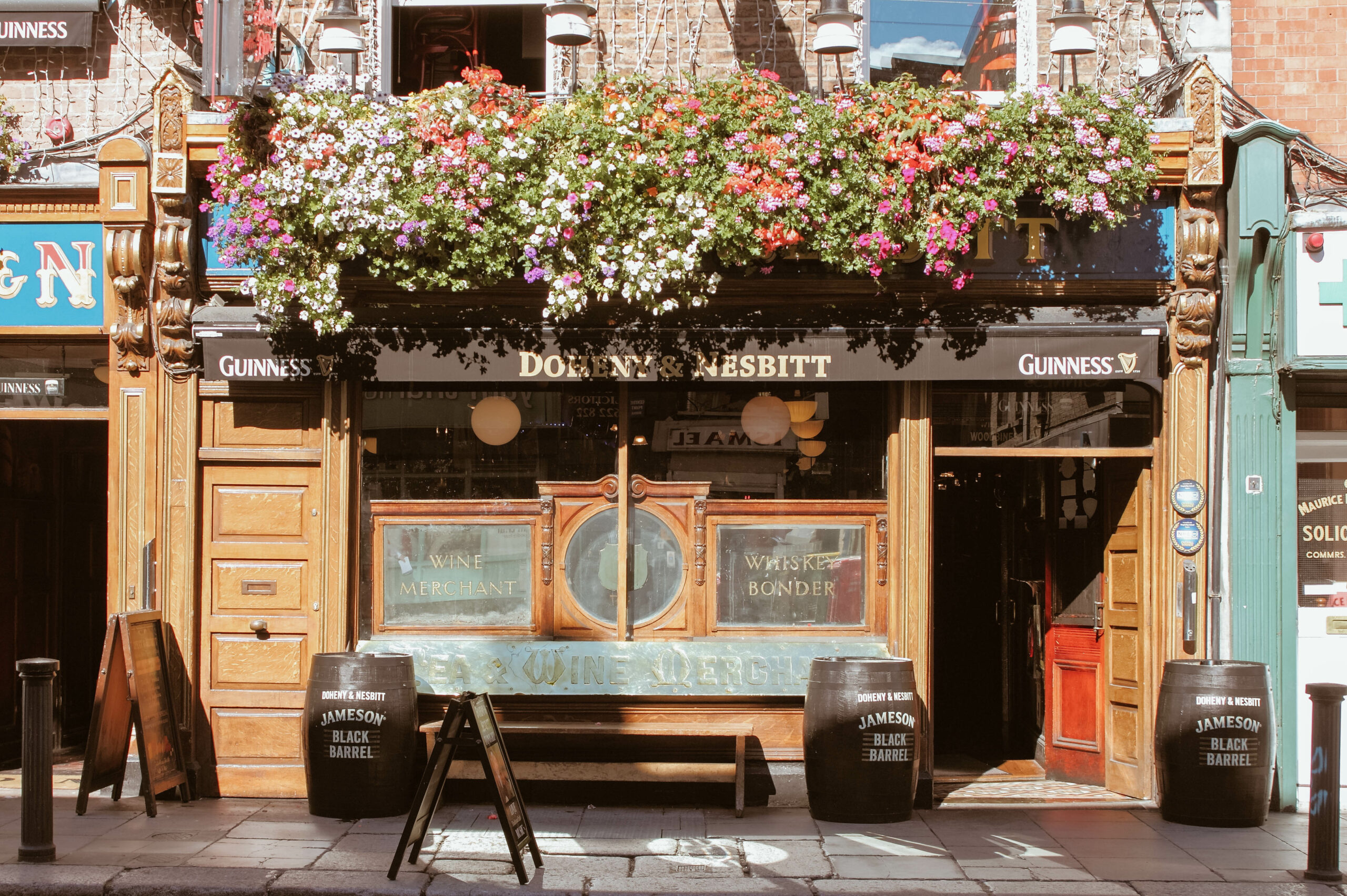
Doheny & Nesbitt has been a Dublin staple and local favorite since 1867. Credit: Shutterstock 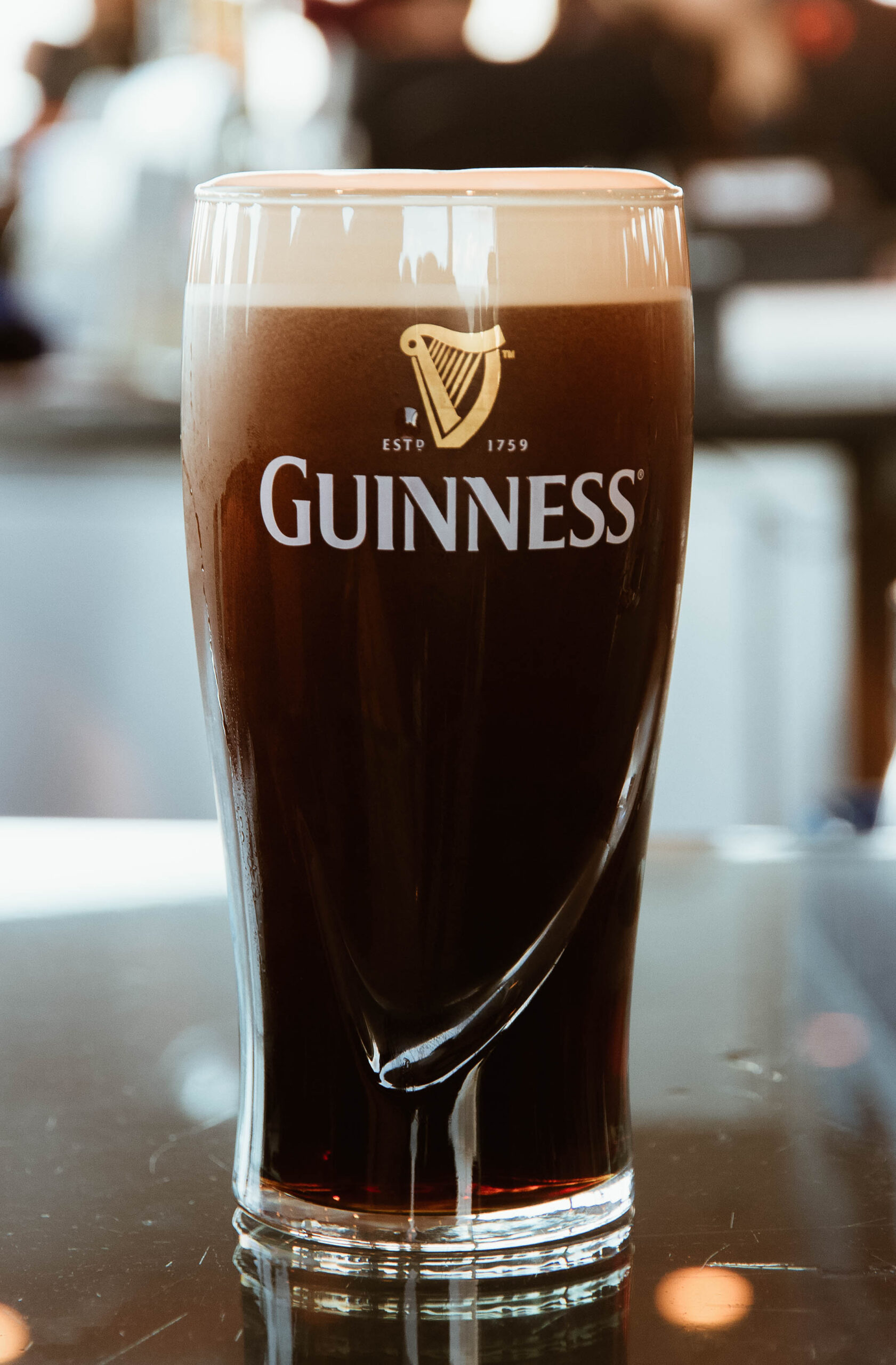
Nothing beats a fresh pint of Guinness. Credit: Shutterstock
The neighborhoods east and west of Grafton Street are loaded with coffee shops, restaurants and pubs. At The Greenhouse, Finnish chef Mickael Viljanen uses the freshest Irish produce, meats and seafood to create innovative four- and six-course tasting menus that have earned him two Michelin stars.
A hopping hood for live music, pubs, and noisy nightlife, Temple Bar offers Brazilian, Greek, Indian, Italian, Lebanese, Mexican food, and more. Book at Banyi, the best Japanese restaurant in Dublin with lunchtime bento boxes, sushi and classic Japanese main courses. At some Temple Bar pubs licensed for late hours, the price for a pint goes up by the hour.
Across the River Liffey, climb an eighteenth century spiral staircase from a ground-level bookstore to The Winding Stair, a restaurant with an open kitchen that turns out full Irish breakfast and other classics. In North Dublin, you’ll find Chapter One on Parnell Square beneath the Dublin Writer’s Museum in the vaulted basement of a Georgian residence that was once home to the Jameson Whiskey family. This art-filled space serves French-inspired dishes that would rival those in Paris.
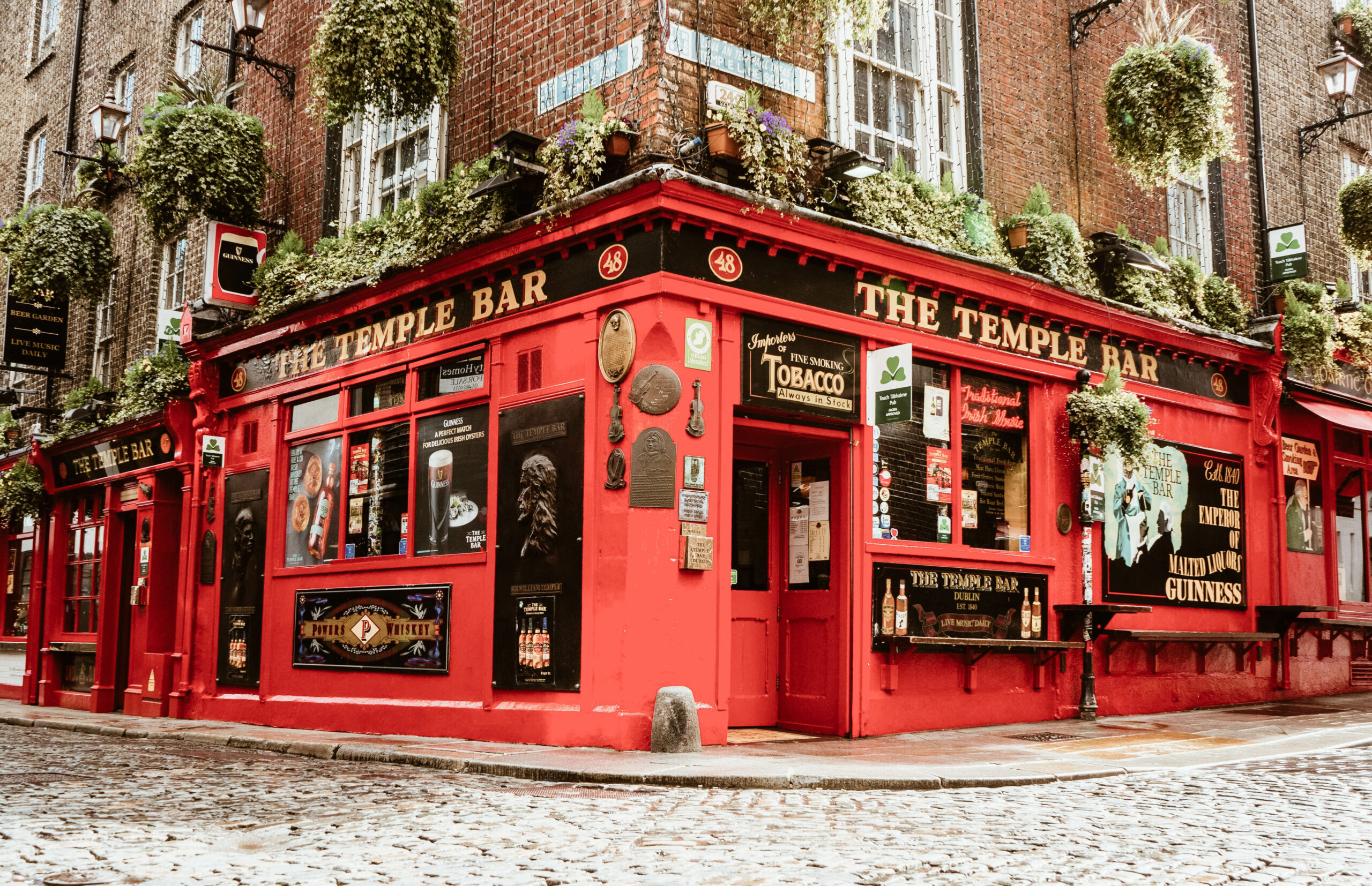
The Temple Bar, an Irish classic, offers food from all over the world. Credit: Leonhard Niederwimmer/Unsplash 
Don’t miss the moules frites at The Winding Stair. Credit: The Winding Stair
Play
For Irish history and culture, admire the Georgian architecture around Merrion Square, built during the reigns of four successive King Georges that ruled Great Britain and Ireland between 1714-1830. Check out the brick townhouse of Poet/playwright Oscar Wilde, who grew up at 1 Merrion Square, and No. 82, where Nobel laureate Yeats lived during his term as senator of the new Irish Free State (1922-1928). Learn more history from the vast collection of Irish art at the National Gallery on Merrion Square West. Pop into The Shelbourne Hotel where in 1922 Michael Collins and a committee drafted and signed the constitution for the Free Irish State in Room 112, after British troops evacuated Dublin Castle.
Some of the best scores in Dublin can be found in one-off shops on streets parallel to Grafton Street, Dublin’s main shopping promenade anchored by the luxe Brown Thomas department store. Continue down Grafton to Trinity College, where the Old Library contains the Book of Kells, an illuminated manuscript of the Four Gospels of the New Testament made by Celtic monks around 800 A.D., and the impressive 213-foot Long Room boasting 200,000 of the library’s oldest books.
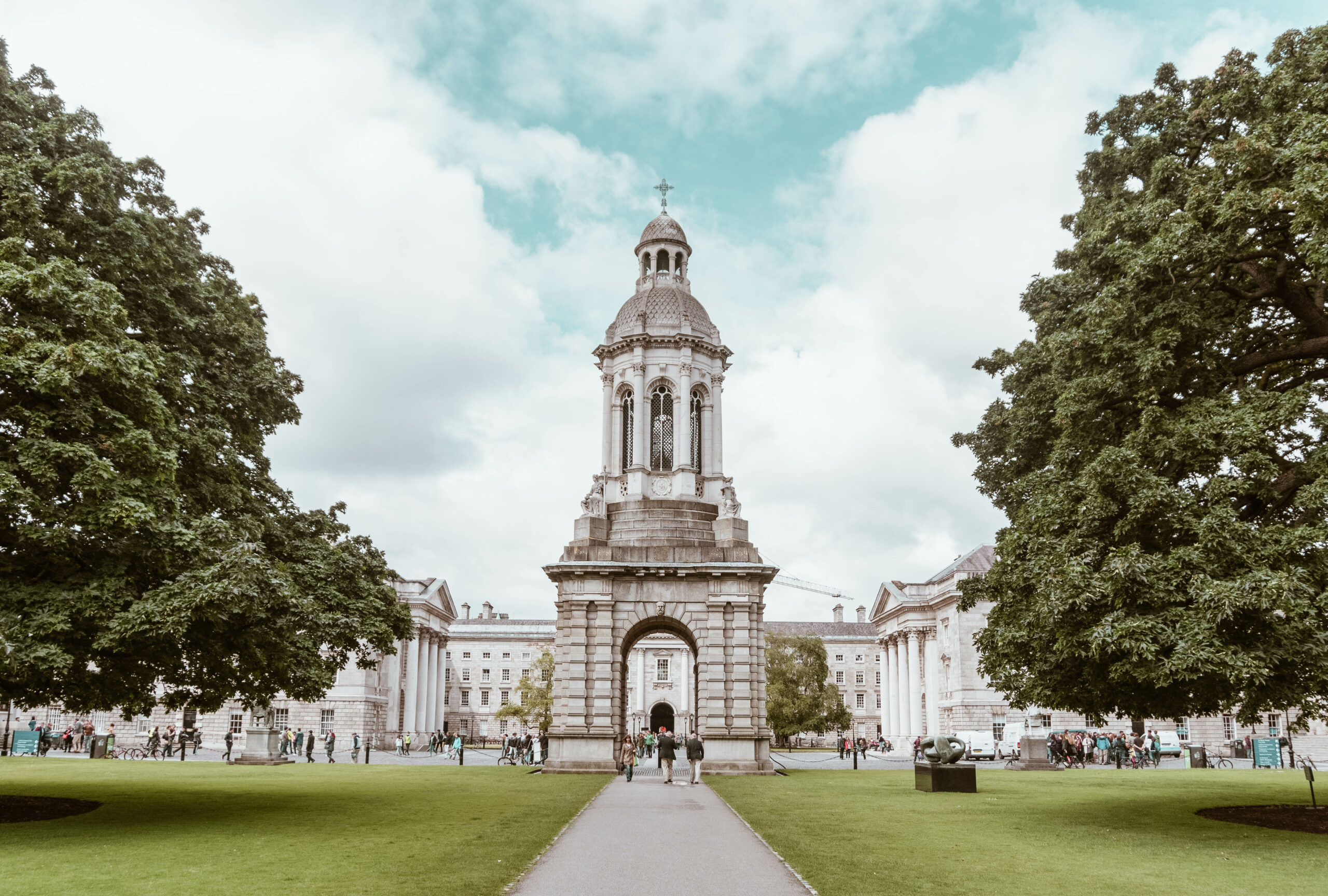
Trinity College, Ireland’s equivalent to the Ivy League, boasts impressive gardens. Credit: Shutterstock 
Explore the many tomes of the Old Library, which contains the Book of Kells. Credit: Trinity College
Head north over the O’Connell Bridge for serious theater. Enjoy traditional productions at The Abbey and more avant-garde plays at its sister theater, The Peacock.
The regenerated Docklands area, now a base for international social media companies, provides photo backdrops of the Samuel Beckett Bridge, designed by Santiago Calatrava to resemble a harp, and the Daniel Libeskind-designed Bord Gáis Energy Theatre. Dig into family history at now called EPIC The Irish Emigration Museum, housed in the restored, listed CHQ Building.Learn about Viking and medieval Dublin in The Liberties, an area that evolved in the twelfth century outside the walled city of Dublin. Step back in time at Dublinia, an interactive museum with reenactments, role-playing, and Viking warrior drills. Explore Christchurch Cathedral and its 12th century crypt, Dublin Castle, and St. Patrick’s Cathedral on the site where Ireland’s patron saint baptized Irish chieftains in the 5th century. And lift a pint to history at The Brazen Head, the oldest pub in Ireland, built in 1198.

Quit harping on! The Samuel Beckett Bridge was designed by Santiago Calatrava. Credit: Jonathon Hessian/Tourism Ireland 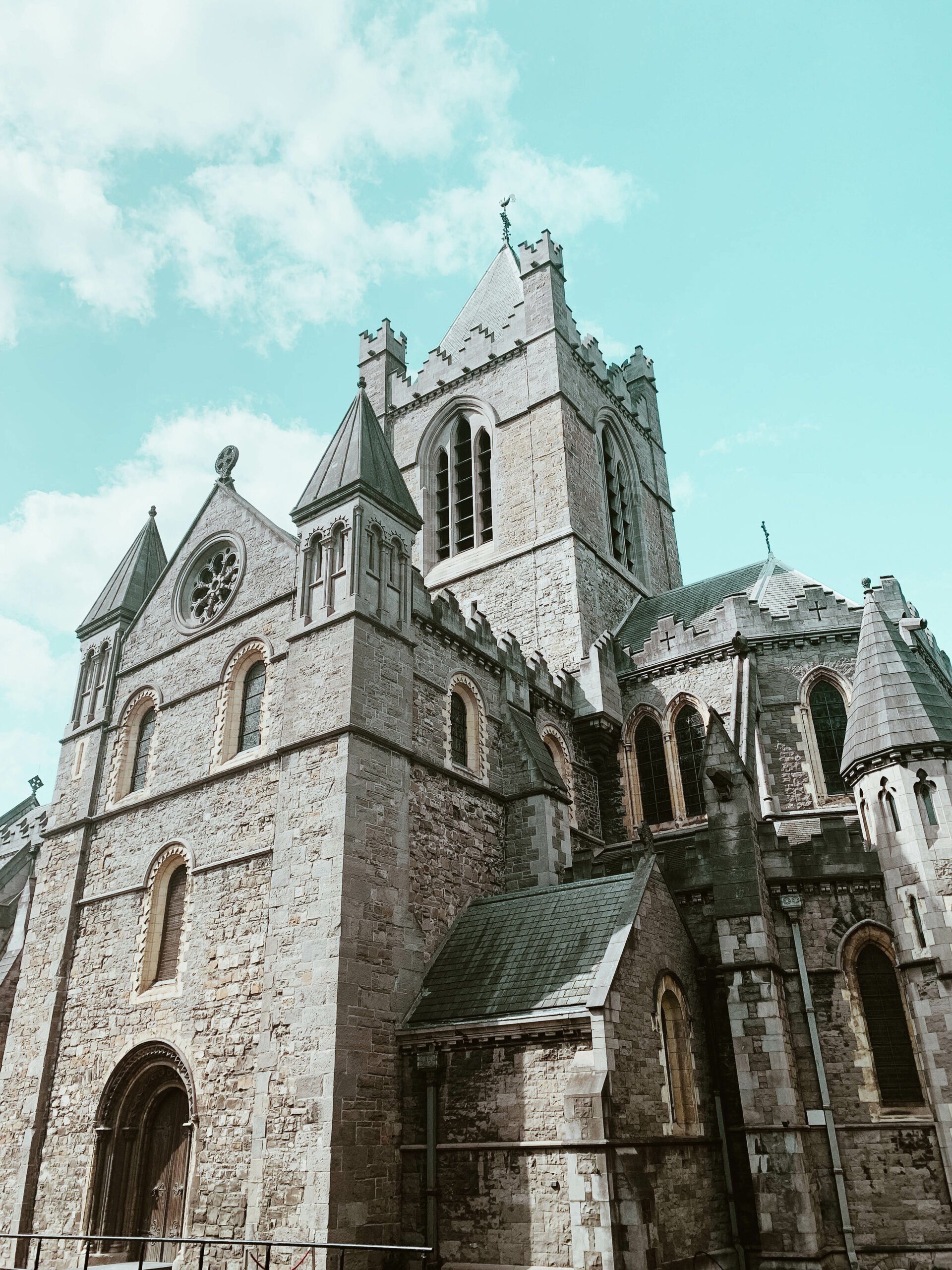
Christchurch Cathedral stands tall in the city center. Credit: Anshul Malhotra/Unsplash
Stay
The Clarence Hotel
On the fringe of Temple Bar, The Clarence rocks without charging superstar prices, which is surprising considering Bono and The Edge of U2 own the building. With its brick and granite facade, you know it will be classy. Choose from 58 rooms and suites, plus a two-bedroom penthouse with a terrace. Dine at Cleaver East for hearty meals and savor a cocktail at the dreamy blue new lobby bar. Don’t let a noisy weekend night in Temple Bar ruin your fun —bliss out at The Clarence, where U2 first performed “Beautiful Day” in 2000.
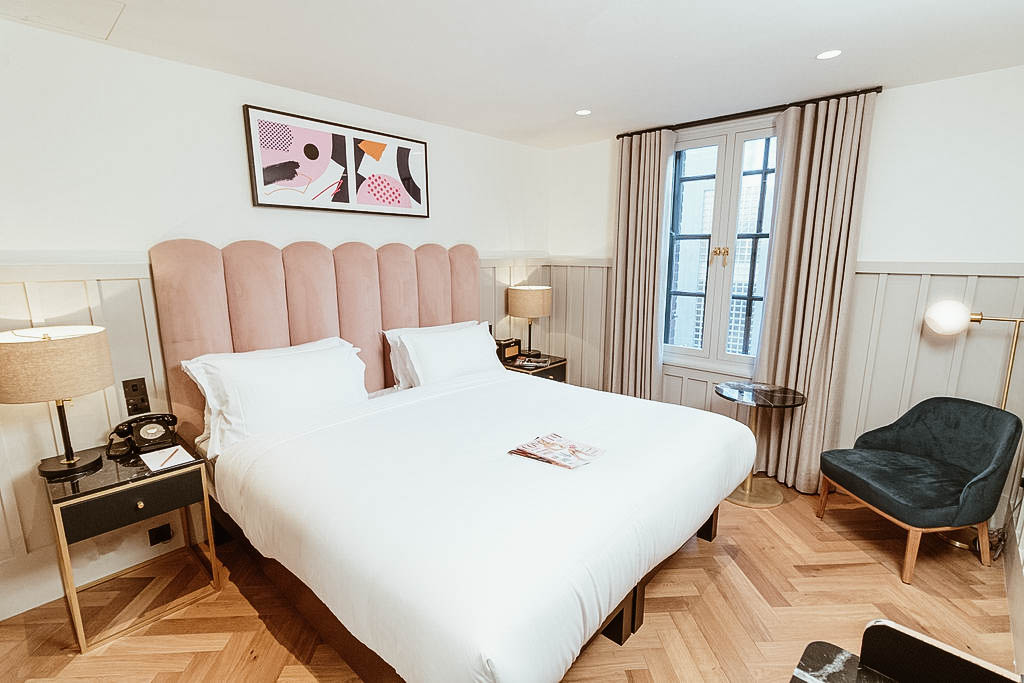
Calming pastel tones dot the rooms at The Clarence Hotel. Credit: The Clarence Hotel 
Beautiful day—relax at the lobby bar of the hotel, located in a building owned by the U2 frontman. Credit: The Clarence Hotel
Dylan Hotel Dublin
One of Dublin’s chicest boutique hotels, the Dylan Hotel Dublin is a brick, Victorian townhouse near Merrion Square that nails the modern makeover of a grand historic home without giving up original details such as vaulted ceilings and porthole windows. Once a residence for nurses, the Dylan carries on that tradition of caring for others.
Seventy-two one-of-a-kind rooms and suites come with Nespresso machines and iPod docks. Jade-hued seating and an artistic live-moss wall set the scene for great meals at The Eddison Restaurant. There are two bars, including the exclusive residents-only Ruby Room, where the bartender prescribes an Irish Painkiller, a cocktail of Powers John’s Lane, sage syrup, lime, and orange bitters.
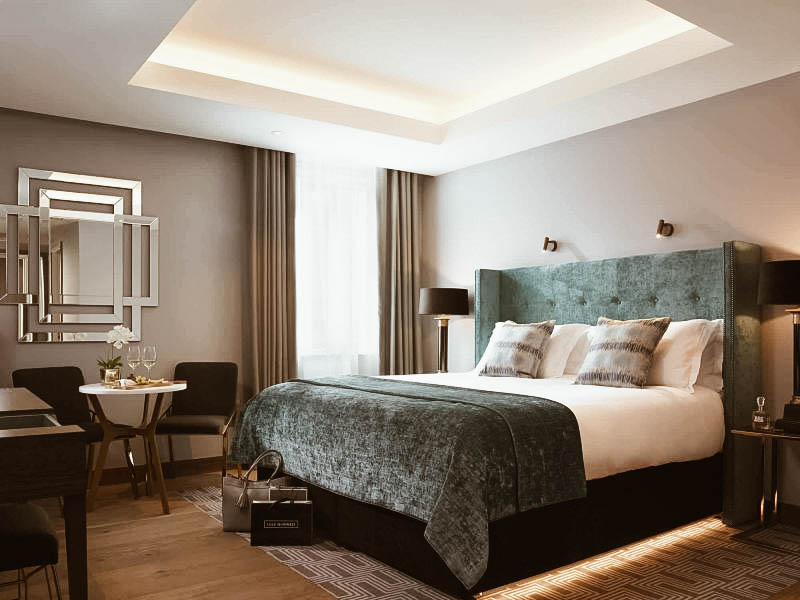
Enjoy the cozy elegance of the Dylan Hotel Dublin. Credit: Dylan Hotel Dublin 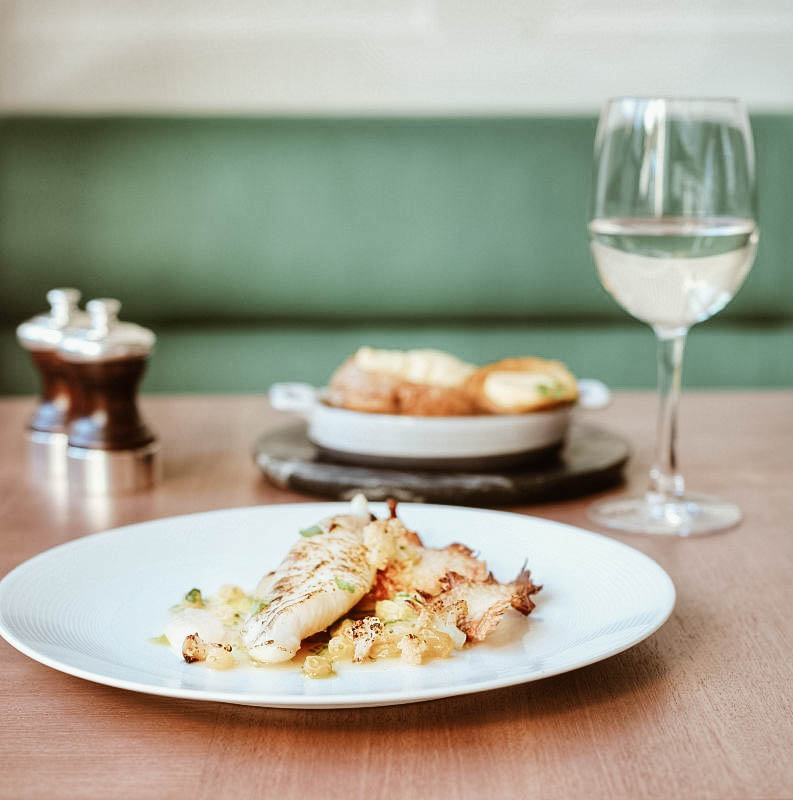
Don’t go to bed on an empty stomach! Credit: Dylan Hotel Dublin
